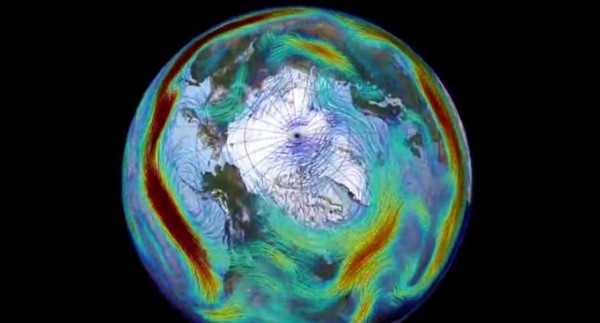By Arthur Dominic J. Villasanta , | March 28, 2017

Jet streams.
An international team of climate scientists has found a connection between many extreme weather events and the impact climate change has on the jet stream, which are fast flowing, narrow, meandering air currents located near the altitude of the tropopause and flowing west to east.
Like Us on Facebook
Among the unusual weather events that aroused the researchers' interest were the 2003 European heat wave; the 2010 Pakistan flood and Russian heat wave; the 2011 Texas and Oklahoma heat wave and drought and the 2015 California wildfires.
Researchers looked at a combination of some 50 climate models from around the world that are part of the Coupled Model Intercomparison Project Phase 5 (CMIP5), which is part of the World Climate Research Program.
These models are run using specific scenarios and produce simulated data that can be evaluated across the different models. While the models are useful for examining large-scale climate patterns and how they are likely to evolve over time, they can't be relied on for an accurate depiction of extreme weather events. That is where actual observations prove critical.
Researchers examined the historical atmospheric observations to document the conditions under which extreme weather patterns form and persist. These conditions occur when the jet stream becomes stationary and the peaks and troughs remain locked in place.
"We came as close as one can to demonstrating a direct link between climate change and a large family of extreme recent weather events," said Michael Mann, distinguished professor of atmospheric science and director, Earth System Science Center, Penn State.
Theoretically, standing jet stream waves with large amplitude north/south undulations should cause unusual weather events.
Researchers looked at real-world observations and confirmed that this temperature pattern does correspond with the double-peaked jet stream and waveguide patter associated with persistent extreme weather events in the late spring and summer such as droughts, floods and heat waves.
They found the pattern has become more prominent in both observations and climate model simulations.
Using the simulations, the researchers demonstrated that rising greenhouse gases are responsible for the increase.
"We are now able to connect the dots when it comes to human-caused global warming and an array of extreme recent weather events," said Mann.
While the models do not reliably track individual extreme weather events, they do reproduce the jet stream patterns and temperature scenarios that in the real world lead to torrential rain for days, weeks of broiling sun and absence of precipitation.
"If the same weather persists for weeks on end in one region, then sunny days can turn into a serious heat wave and drought, and lasting rains can lead to flooding," said Stefan Rahmstorf at the Potsdam Institute for Climate Impact Research (PIK) in Germany.
-
Use of Coronavirus Pandemic Drones Raises Privacy Concerns: Drones Spread Fear, Local Officials Say

-
Coronavirus Hampers The Delivery Of Lockheed Martin F-35 Stealth Fighters For 2020

-
Instagram Speeds Up Plans to Add Account Memorialization Feature Due to COVID-19 Deaths

-
NASA: Perseverance Plans to Bring 'Mars Rock' to Earth in 2031

-
600 Dead And 3,000 In The Hospital as Iranians Believed Drinking High-Concentrations of Alcohol Can Cure The Coronavirus

-
600 Dead And 3,000 In The Hospital as Iranians Believed Drinking High-Concentrations of Alcohol Can Cure The Coronavirus

-
COVID-19: Doctors, Nurses Use Virtual Reality to Learn New Skills in Treating Coronavirus Patients










